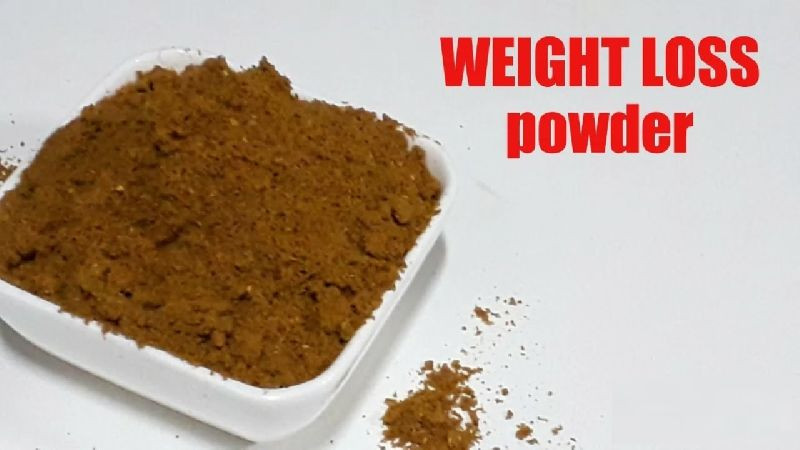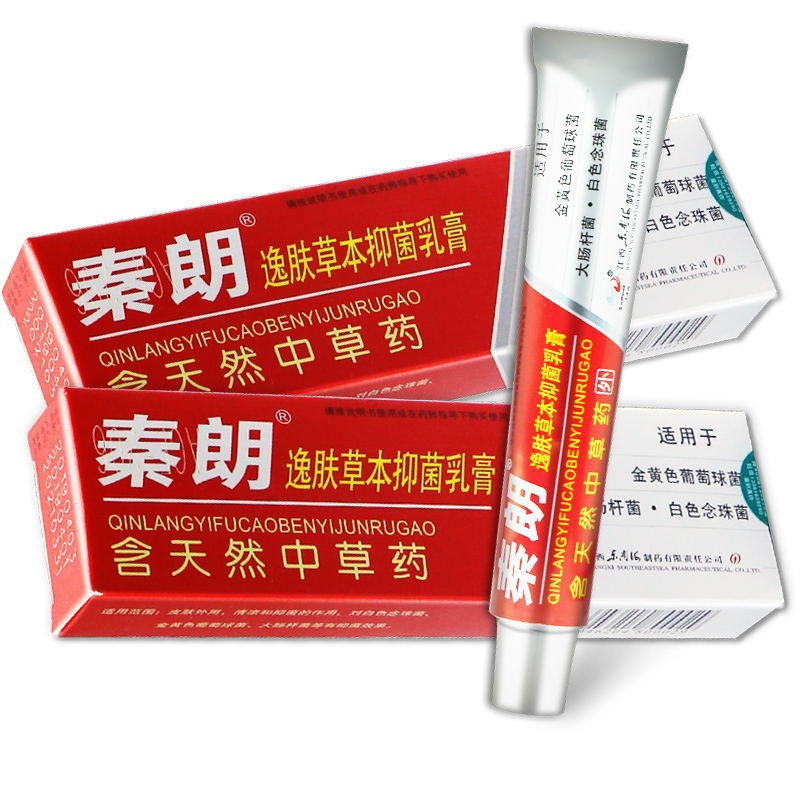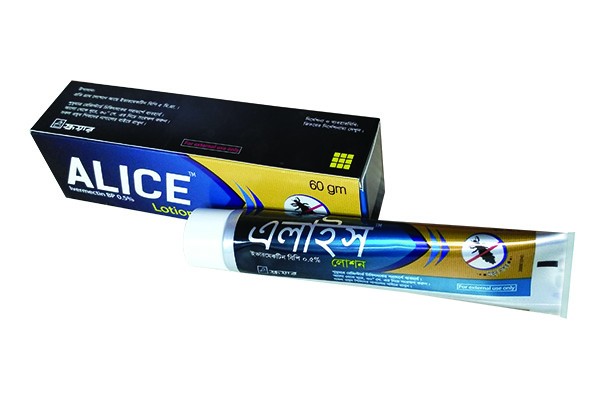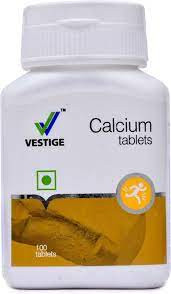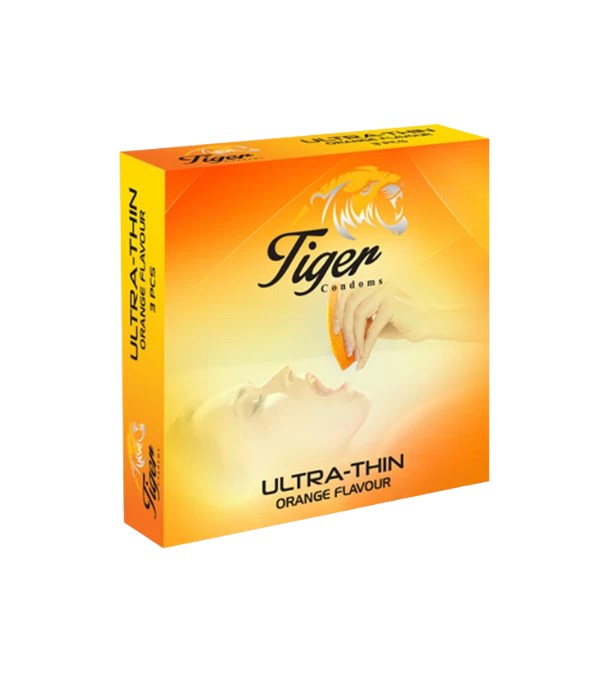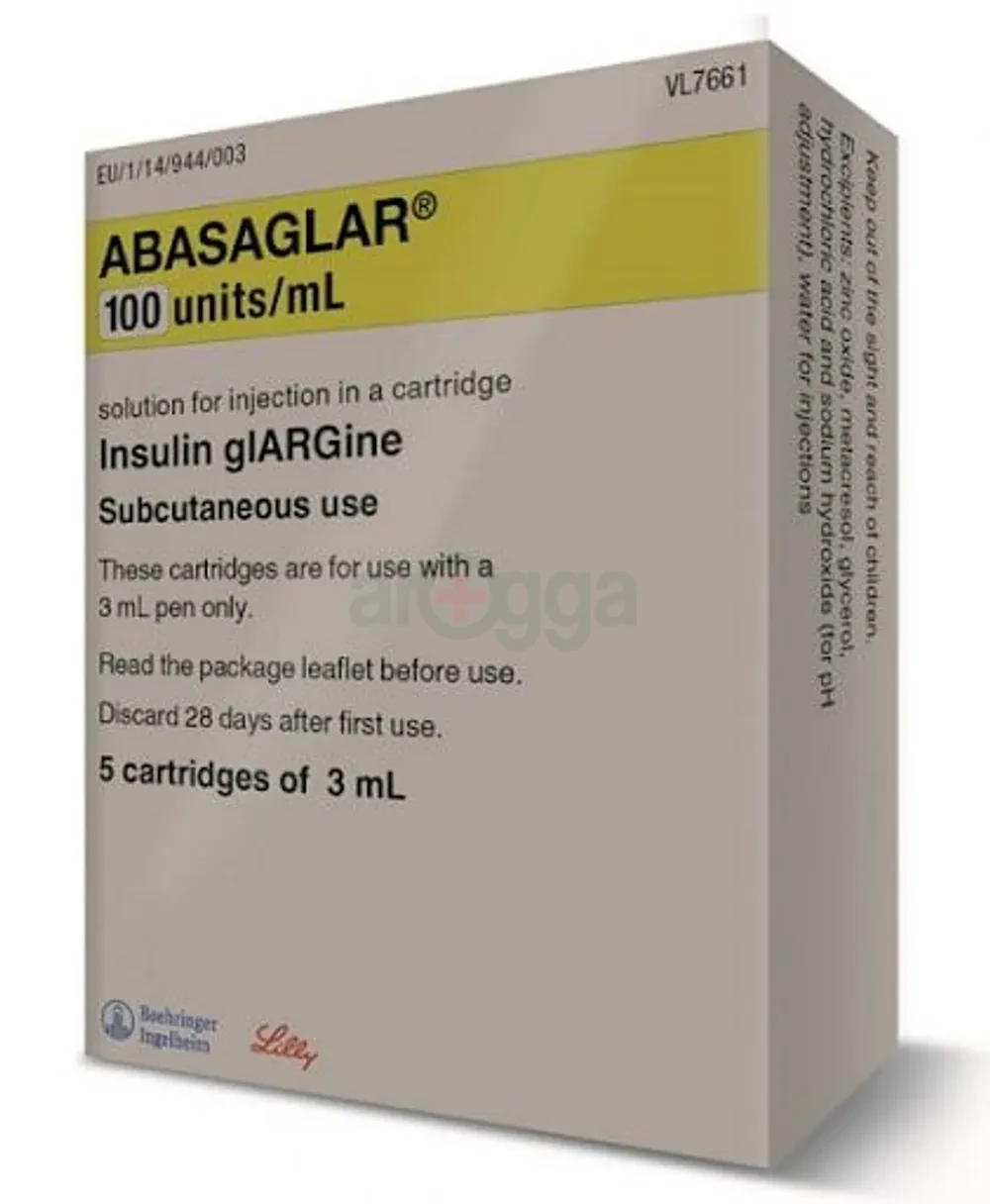

Abasaglar Cartidge100IU/ml
Inhouse product
-
৳1,030.00
৳1,550.00 -
৳10.00
৳12.00 -
৳280.00
৳500.00 -
৳127.00
৳132.00 -
৳884.00
৳1,105.00 -
৳30.00
৳60.00
Reviews & Ratings
Introduction
Abasaglar Cartidge is a long-acting type of insulin used to treat types 1 and 2 diabetes mellitus in both adults and children. It provides a steady level of insulin in the body for an entire day and helps control blood sugar levels. This helps to prevent complications of diabetes. Abasaglar Cartidge can be prescribed alone or along with fast-acting insulin or other diabetes medicines. Your doctor or nurse will teach you the correct way of injecting it under the skin. You should use this medicine regularly as per the dose advised to get the maximum benefit. If you stop taking it, your blood sugar levels may rise very high which may put you at risk of serious complications. It is only a part of the treatment program that should also include a healthy diet, regular exercise and weight reduction as advised by your doctor. The most common side effect of this medicine is low blood sugar levels (hypoglycemia). To prevent this, it is important to inject only the correct dose of medicine, have regular meals, and monitor your blood sugar levels regularly. Drinking excessive alcohol can also lead to a fall in your blood sugar levels. Other side effects include allergy at the injection site like redness, swelling, or hard lumps (lipohypertrophy). Some people gain weight while taking insulin. Do not use this medicine when you have low blood sugar levels. Before starting the treatment, inform your doctor if you have ever had kidney, liver or heart problems before starting treatment. Pregnant or breastfeeding women should consult their doctor before using it.
Uses of Abasaglar Cartidge
- Diabetes mellitus (Type 1 & Type 2)
Side effects of Abasaglar Cartidge
- Hypoglycemia (low blood glucose level)
- Injection site allergic reaction
- Lipodystrophy (skin thickening or pits at the injection site)
How to use Abasaglar Cartidge
Your doctor or nurse will guide you how to use this medicine.
How Abasaglar Cartidge works
Abasaglar Cartidge is a long-acting insulin that provides consistent, all-day sugar control. It works like your body's natural insulin. Insulin facilitates reuptake of sugar in muscle and fat cells and also suppresses the production of sugar in the liver.
- Lantus 100IU/ml Solution for Injection is injected under the skin. It needs to be injected once daily, at the same time every day.
- Injection below the skin of the abdomen results in faster absorption than other injection sites.
- Injection sites must be rotated to prevent hard lumps from developing at one site.
- Exercise regularly, eat a healthy diet and take your other diabetes medicines (if prescribed) alongside.
- Hypoglycemia (low blood sugar level) is a common side effect. Hence, regular monitoring of blood sugar levels is required while taking this medicine.
- Always carry some high sugar food such as sugar candy or glucose candy, fruit juice and glucose/glucon-D with you so that you can take it when you experience hypoglycemia symptoms such as cold sweats, cool pale skin, tremors, weakness, and anxiety.
- Opened vials/cartridge stay good at room temperature for up to 4 weeks, while unopened vials must be placed in the refrigerator (2°C–8°C).
- Do not use if the preparation is no longer clear and colorless, or if it contains particles.
Indication
Diabetes mellitus
Administration
Administer subcutaneously in the upper arm, thigh or abdominal wall. A subcutaneous injection into the abdominal wall results in a faster absorption than from other injection sites. Should not be administered IV or via an insulin pump; IV administration of the usual SC dose could result in severe hypoglycemia
Adult Dose
Subcutaneous Type 1 or 2 Diabetes Mellitus Initial dose Type 1 diabetes mellitus: Starting dose should be approximately one third of the total daily insulin requirements; short-acting, premeal insulin should be used to satisfy the remaining two thirds of the daily insulin requirements; insulin glargine should be used in combination with a short-acting or rapid-acting insulin; Type 2 diabetes mellitus: Starting dose in patients who are not currently treated with insulin is 10 units (or 0.2 unit/kg) once daily Dosage should be individualized in accordance with the needs of the patient and adjusted according to blood glucose measurement Converting from other insulins If changing from a treatment regimen with an intermediate- or long-acting insulin to a regimen with insulin glargine, the amount and timing of shorter-acting insulins and doses of any oral antidiabetic drugs may need to be adjusted From once-daily NPH insulin to once-daily insulin glargine: Initial dose is the same as the dose of NPH that is being discontinued From twice-daily NPH insulin to once-daily insulin glargine: Initial dose is 80% of the total daily NPH dose that is being discontinued; this dose reduction will lower the likelihood of hypoglycemia Dosing Considerations Indicated for once-daily SC administration; exhibits relatively constant glucose-lowering profile over 24 hr May be administered at any time during the day; should be administered SC once daily at the same time every day Dose must be individualized based on clinical response; blood glucose monitoring is essential in all patients receiving insulin therapy In patients with type 1 diabetes, insulin glargine must be used in regimens with short-acting insulin As with all insulins, injection sites should be rotated within the same region (abdomen, thigh, or deltoid) from one injection to the next to reduce the risk of lipodystrophy; no clinically relevant difference in insulin glargine absorption after abdominal, deltoid, or thigh SC administration As with all insulins, the rate of absorption and, consequently, the onset and duration of action may be affected by exercise and other variables (eg, stress, intercurrent illness, changes in coadministered drugs, meal patterns)
Child Dose
Type 1 Diabetes Mellitus It is a long-acting human insulin analogue indicated to improve glycemic control in children with type 1 diabetes mellitus; <6 years: Safety and efficacy not established >6 years: Approximately one third of the total daily insulin requirements SC; rapid-acting or short-acting, premeal insulin should be used to satisfy the remaining two thirds of the daily insulin requirements; usual daily maintenance range in adolescents is <1.2 units/kg/day during growth spurts
Renal Dose
Renal impairment: Dose adjustments may be needed.
Contraindication
Hypoglycaemia; IV route.
Mode of Action
Insulin glargine, a long-acting analog of human insulin, regulates carbohydrate, protein and fat metabolism by inhibiting hepatic glucose production and lipolysis, and enhancing peripheral glucose disposal.
Precaution
Renal or hepatic impairment; pregnancy; lactation; child <6 yrs. Transferring from other insulin. Monitor serum glucose, potassium, electrolytes, HbA1c and lipid profile. Concomitant illness esp infections; hypokalaemia. Lactation: Considered safe for use while breast feeding
Side Effect
Hypoglycaemia, lipodystrophy, pruritus, rash, wt gain, sodium retention and oedema. Inj site reactions e.g. pain, itching, hives, swelling and inflammation. Influenza-like symptoms, Pallor, Palpitation, Tachycardia, Mental confusion, Weakness, Blurred vision, Itching, Hunger, Nausea.
Interaction
Effects may be increased by: oral antidiabetic agents, ACE inhibitors, disopyramide, fibrates, fluoxetine, MAOIs, propoxyphene, salicylates, somatostatin analog (e.g. octreotide), sulfonamide antibiotics. Effects may be decreased by: corticosteroids, niacin, danazol, diuretics, sympathomimetic agents, isoniazid, phenothiazine derivatives, somatropin, thyroid hormones, oral contraceptives, lithium. Signs of hypoglycaemia may be masked by beta-blockers, clonidine.
Frequently Bought Products
-
৳1,030.00
৳1,550.00 -
৳10.00
৳12.00 -
৳280.00
৳500.00 -
৳127.00
৳132.00 -
৳884.00
৳1,105.00 -
৳30.00
৳60.00
Online Shopping Bangladesh : MShopBD-Majumder Shop
MShopBD-Majumder Shop Online Shopping in Bangladesh is the Best Shopping store within 10000+ products cash on delivery in dhaka, Khulna, ctg & all over Bangladesh with COD-cash on delivery (Only Shipping Cost Advance ) under by www.esdp.gov.bd (bangladesh.gov.bd ) Home Delivery all Over Bangladesh different location and shop as like as Multivendor Online Sites in BD.
Thank you for choosing MShopBD - Majumder Shop!
